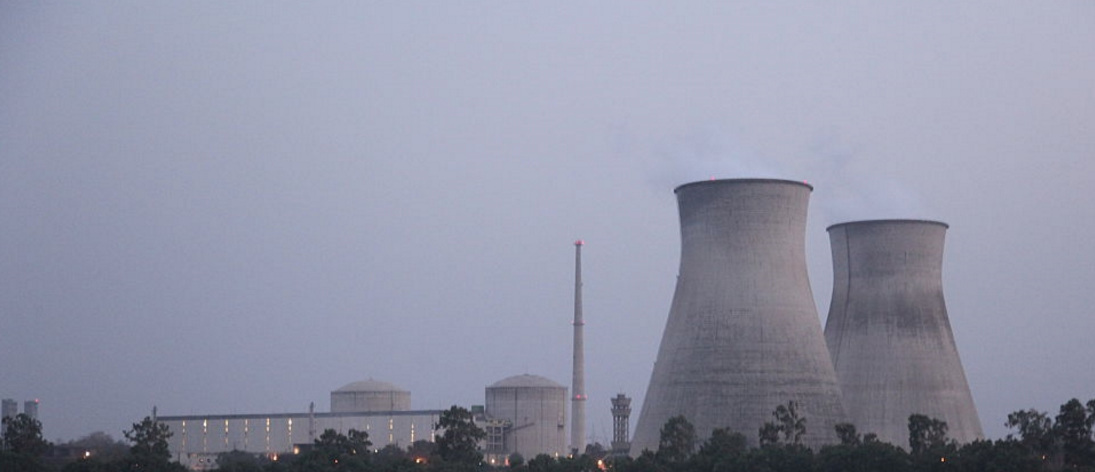
India’s failed bid to acquire membership of the Nuclear Suppliers Group (NSG) has dominated the discussion in diplomatic corridors recently. In the June NSG plenary, both India and the United States expended a great deal of diplomatic capital to ensure India’s entry into the organization. However, this setback does not impede India’s civilian nuclear program; it affects New Delhi’s ability to meet its clean energy commitments.
Considering the emphasis Prime Minister Narendra Modi has placed upon India’s NSG membership, it is surprising that NSG membership is not really required for India’s nuclear program—for a variety of reasons. First, India’s desire for inclusion into the NSG group is not due to its uranium fuel needs. In fact, uranium is needed only at the initial stage. Existing since 1950s, Dr. Homi Bhabha formulated the program to secure the country’s long term energy independence in three stages. The first stage, that of Pressurised Heavy Water reactor, uses natural uranium as the initial fuel to produce electricity, while generating plutonium needed for second stage, namely Fast Breeder. The second and third stages require plutonium and thorium as fuels respectively, for electricity generation. And India has thorium reserves in abundance, while the latter two stages are independent of NSG’s exemption criteria.
Second, even in situations where NSG membership would have aided India, India has proven able to obtain NSG waivers and other forms of substantive international nuclear cooperation. For example, the United States had a large role in pushing for a 2008 NSG waiver for India. The 2008 NSG waiver was important because it provided capacity building in nuclear energy development as well as mitigated the issue of uranium shortage for the existing programs. Outside of the NSG waiver, the United States lifted the nuclear trade embargo on India that was in place since 1974 and signed a Civil Nuclear Cooperation Agreement with India that allowed New Delhi to trade civilian nuclear fuel and technology legally. The lifting of the NSG embargo and related nuclear trade prohibitions permitted the development of substantial trade agreements in nuclear material and technologies with several countries, as mentioned below.

Third, India has already had a rigorous non-proliferation regime without NSG membership. There is no reason to believe that India’s commitment to the non-proliferation of nuclear weapons and technologies will diminish even if it remains outside of the NSG for the foreseeable future. India has observed unilateral and voluntary moratorium on further nuclear tests ever since 1998. Even though India is an outlier to international regimes like Comprehensive-Test-Ban Treaty and Nuclear Non Proliferation Treaty, its commitment to non-proliferation of nuclear weapons remains credible and serious. On the contrary, with India as a member, NSG will gain an important partner to contain nuclear proliferation through international commerce in equipment, systems, components, and technologies controlled by the NSG Guidelines. In addition, India has worked in tandem with the International Atomic Energy Agency (IAEA) to reinforce measures against the illicit transfer of nuclear technologies and materials. India was one of the countries in Group of Twelve that was involved in creation of IAEA in 1956.
Co-relation between NSG membership and India’s clean energy opportunities
An area in which NSG membership would have utility for India is in fulfilling the clean energy demands of the country. In its Intended Nationally Determined Contribution (INDC) as part of the Paris climate agreement in December 2015, India has committed to produce 40 percent of its electricity from non-fossil fuels by 2030; nuclear energy will comprise one third of this energy production. Thus, India’s commitment to clean energy links its growing domestic requirements with the international goals of addressing global warming.
The Indian nuclear energy market is estimated to be around US$ 150 billion. India has set its renewable energy goals as 100 GW by 2022, and contribution of nuclear energy at 25 percent of total energy by 2050. This will need augmentation in nuclear energy production, and India is establishing new nuclear power plants. American companies such as Westinghouse and GE as well as France’s EDF are looking to develop these power plants in India. Still, being outside of the NSG prohibits India from accessing certain sophisticated technologies in this sphere.
Additionally, after the United States-India civil nuclear deal, India has signed several civil nuclear cooperation agreements with countries such as Russia, France, United Kingdom, South Korea, Czech Republic, Canada, Australia, Argentina, Kazakhstan, Mongolia, and Namibia. For example, Namibia is the fourth largest producer of uranium and agreed to sell it to India in 2009, but the clause of the Pelindaba treaty prohibits Namibia from exporting uranium to India. If India joins NSG, such inhibitions will cease to exist. Namibia too has applied for NSG membership in 2016.
It can be argued that India’s membership will benefit countries that wish to trade nuclear material and technologies needed for energy production to India. With all the pieces falling into place, if India is not considered for the NSG membership, it can hurt its ambitions of augmenting nuclear energy production as an alternative source of clean energy.
Therefore, the development of India’s civil nuclear energy program will remain undeterred whether or not it gains NSG membership. India has access to technology, thanks to both the waiver granted in 2008 and substantial international nuclear cooperation, especially with the United States. Currently, no foreign nuclear reactor supplier is waiting for India to get NSG membership. However, NSG membership does have implications for India’s clean energy goals; if China and other states continue to oppose India’s membership into the NSG, then NSG members ought to consider granting further waivers that would assist India’s clean energy ambitions.
***


